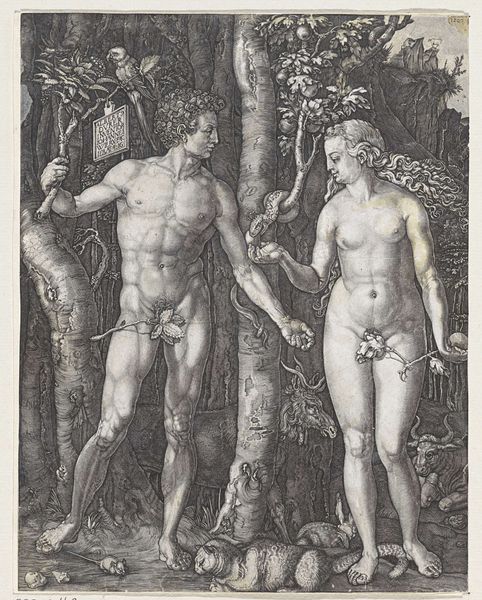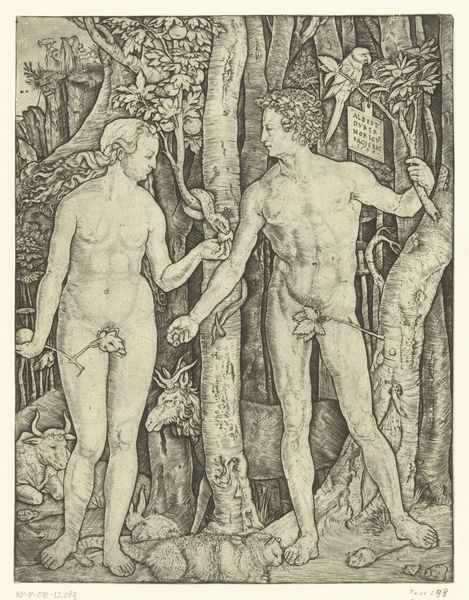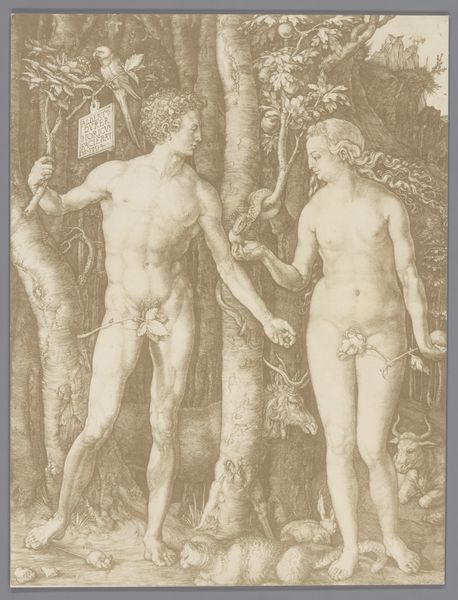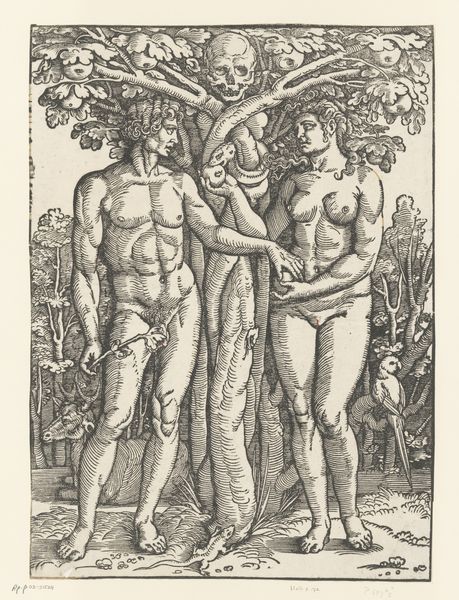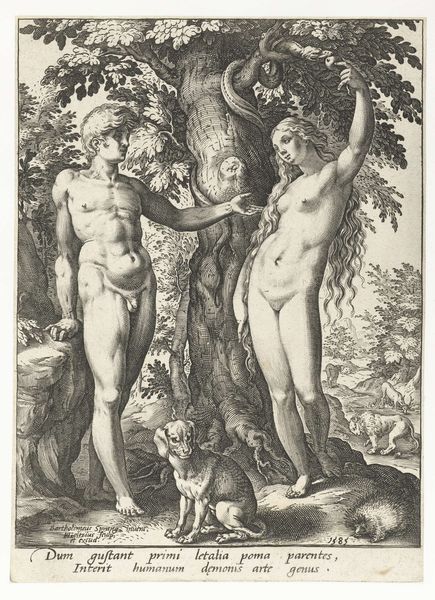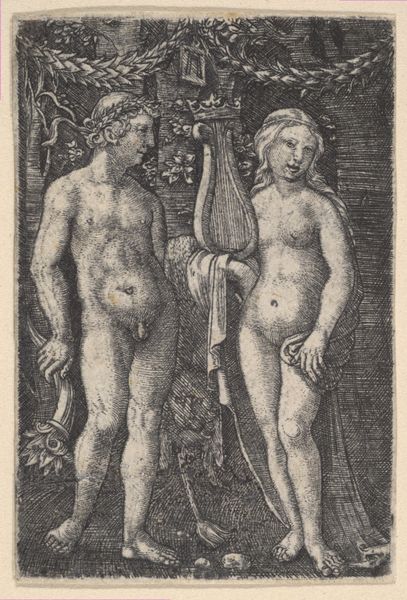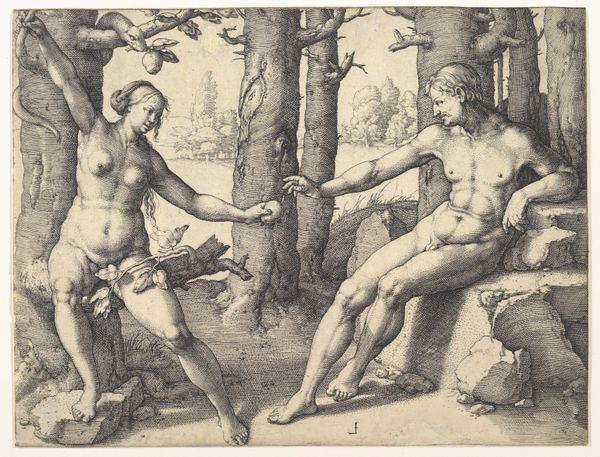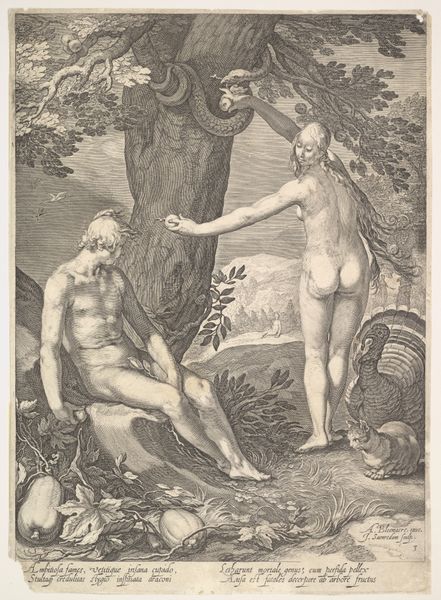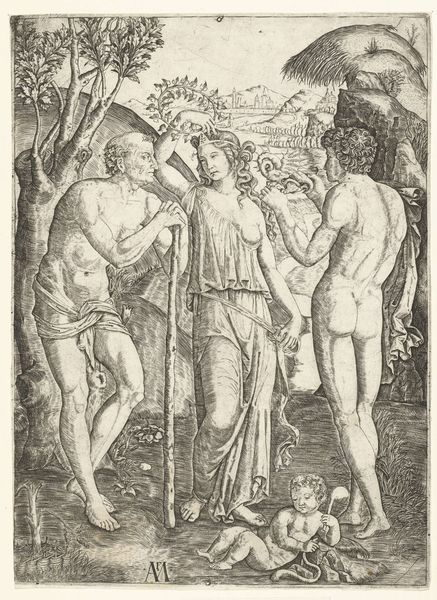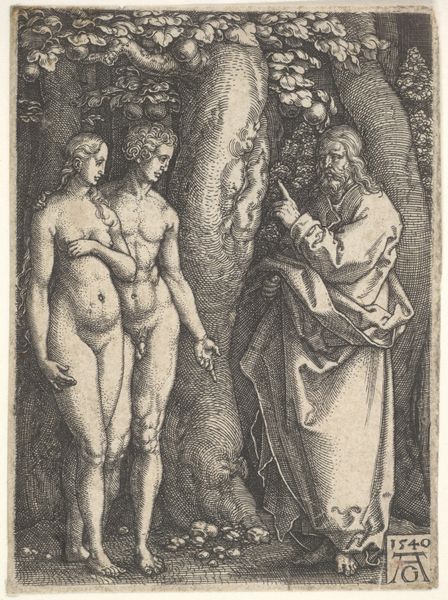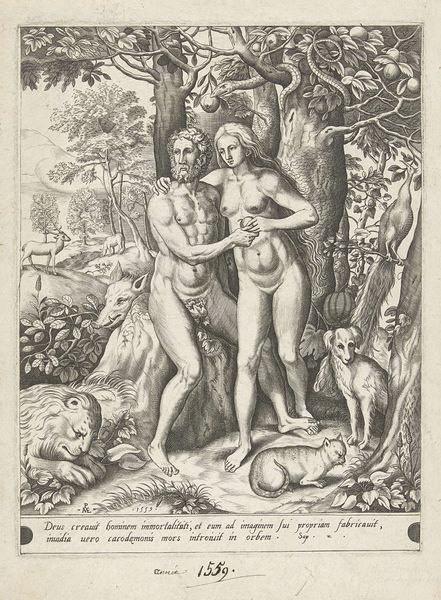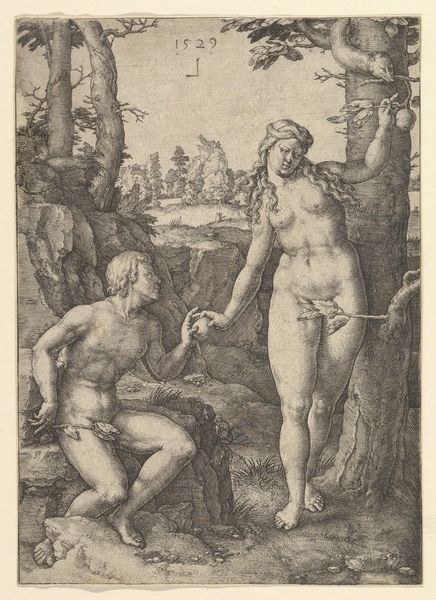
print, engraving
#
portrait
# print
#
figuration
#
christianity
#
human
#
history-painting
#
northern-renaissance
#
nude
#
engraving
Copyright: Public domain
Art Historian: Editor: Editor: Here we have Albrecht Durer’s "Adam and Eve", an engraving from 1504. It’s incredibly detailed. The texture he achieves with just lines is striking, especially in the hair and the background. It gives off a sense of almost unsettling perfection. What compositional elements stand out to you most? Art Historian: I am particularly struck by the way Durer orchestrates space and form in this print. Note the precise, almost scientific, rendering of human anatomy. Consider also how the composition is rigidly symmetrical; Adam and Eve mirror one another on either side of the central tree. What do you make of that mirror effect? Editor: Well, on one hand, it could highlight their initial equality, before the Fall. But the snake is only on Eve's side. She seems to be the active agent. Is it correct? Art Historian: Indeed. Note the contrast between the idealized, classical figures and the dense, somewhat chaotic, Northern European forest. It introduces tension. Moreover, observe the calculated distribution of light and shadow. How does Durer use light to define form and draw the viewer's eye? Editor: The figures are very brightly lit compared to the forest and animals in the background. It spotlights them, but the close details pull me back to that darker forest, the symbols in there. Is there some significance behind the animals he depicts? Art Historian: One could explore that area. But considering our formalist focus, what we have to do is see what they give to the composition and texture of the print as a whole. They enrich the overall composition with an almost overwhelming degree of detail, drawing the viewer's eye deeper into the artwork. Do you see now how meticulously Durer balanced classical ideals with a Northern sensibility? Editor: Yes, it's less about what the animals *mean*, and more about how they contribute to the density and depth of the scene. I can see how much that structural balance shapes the meaning of the work. Art Historian: Precisely. Through analyzing its intrinsic formal elements we learn the depth of its visual sophistication. A truly rewarding study, don’t you agree?
Comments
No comments
Be the first to comment and join the conversation on the ultimate creative platform.
